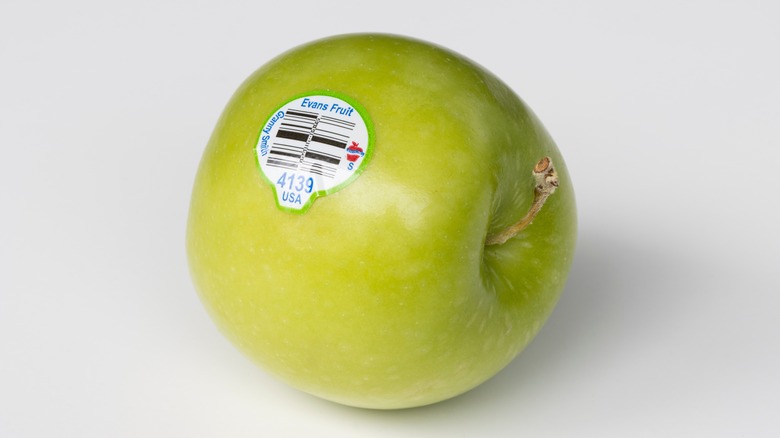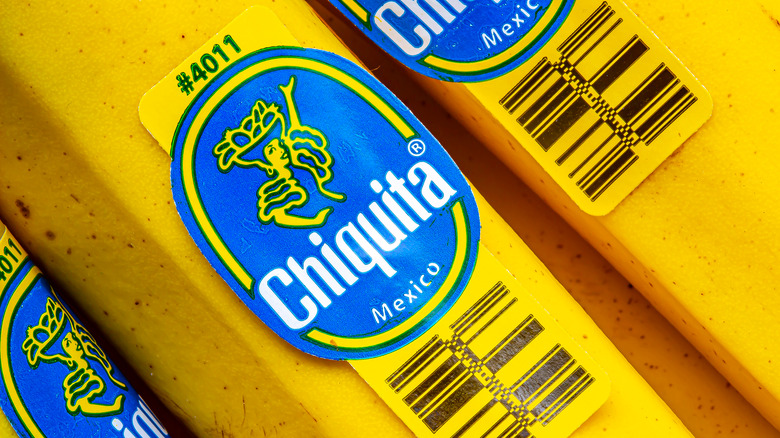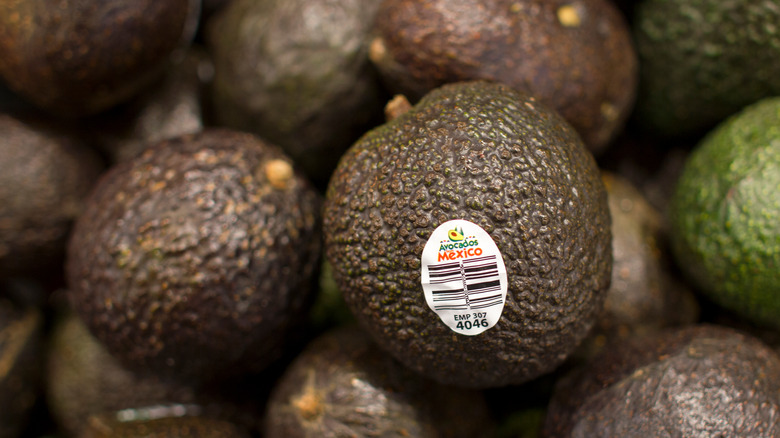Are The Stickers On Fruit Actually Edible?
It happens to the best of us -– you're enjoying a ripe summer peach or crunchy apple, when you suddenly realize you've inadvertently eaten the sticker. Your life briefly flashes before your eyes. It feels like the first time you swallowed chewing gum or a cherry pit. After a short moment of all-consuming panic, you probably forget all about it ... until next time.
Luckily for all of us, the stickers on fruits and vegetables are generally safe to eat and are unlikely to cause any harm if swallowed. Because they are directly, well, stuck, to edible fruits and vegetables, the FDA mandates that produce stickers be made from GRAS (generally recognized as safe) materials. However, that doesn't mean you should throw caution to the wind and go around intentionally eating them. The stickers can be a choking hazard for kids, are tasteless, and (to state the obvious) do not provide any nutritional benefit. Still, if you're in a rush and accidentally swallow a sticker with a big bite of your favorite variety of pear, you can rest assured that you'll be perfectly fine.
What is the purpose of produce stickers?
Produce stickers aren't just for decoration — they serve an important purpose. Each sticker is printed with a price look-up, or PLU, code, which makes things much easier for the cashiers ringing up your fruits and vegetables. It's difficult imagining working at a grocery store before PLU stickers. I mean, could you discern between a Cosmic Crisp Apple and a Honeycrisp at a moment's notice?
PLU codes are set by the International Federation of Produce Standards and have been used by grocery stores since 1990 to label fruits, vegetables, nuts, and herbs. Today, over 1500 PLU codes are used, from Alkmene Apples (3000) to Large Yellow Mango (4961).
Another critical function of PLU codes is setting conventional produce apart from organic produce. Regular produce codes have four digits, while organic produce codes have five. So, for example, the code for a Honeycrisp apple is 3283, while the code for an organic Honeycrisp is 93283.
What should you do with produce stickers?
It's a good idea to remove all the stickers from your fruits and vegetables as soon as you get home from the grocery store –- this way, you won't accidentally eat them later, and, perhaps more importantly, they won't end up contaminating your compost. Most PLU stickers are made with a thin layer of plastic which makes them much more durable during transport, but is not biodegradable (and yes, it's technically safe to ingest ... but again, please don't). These stickers often end up contaminating compost, ultimately resulting in more food waste in landfills.
The good news is that some companies are working on developing compostable PLU stickers made with biodegradable materials. Starting in 2022, France banned all produce stickers that aren't home-compostable, and the USDA is currently developing compostable produce stickers. Additionally, an Italian company is working on laser labeling technology, which could engrave PLU codes directly onto a piece of produce. Environmental benefits aside, this would be super cool. For now, however, most produce stickers in the United States are not compostable, and while they're technically not dangerous if consumed, you should do your best to avoid ingesting them.


